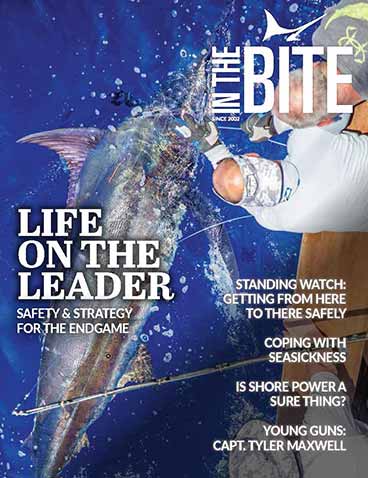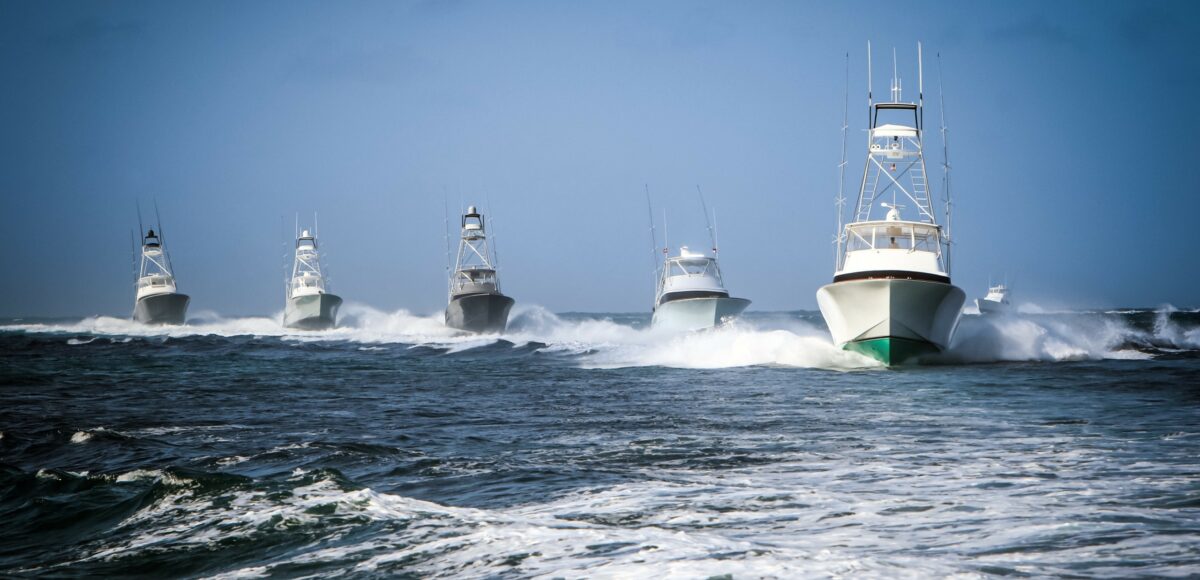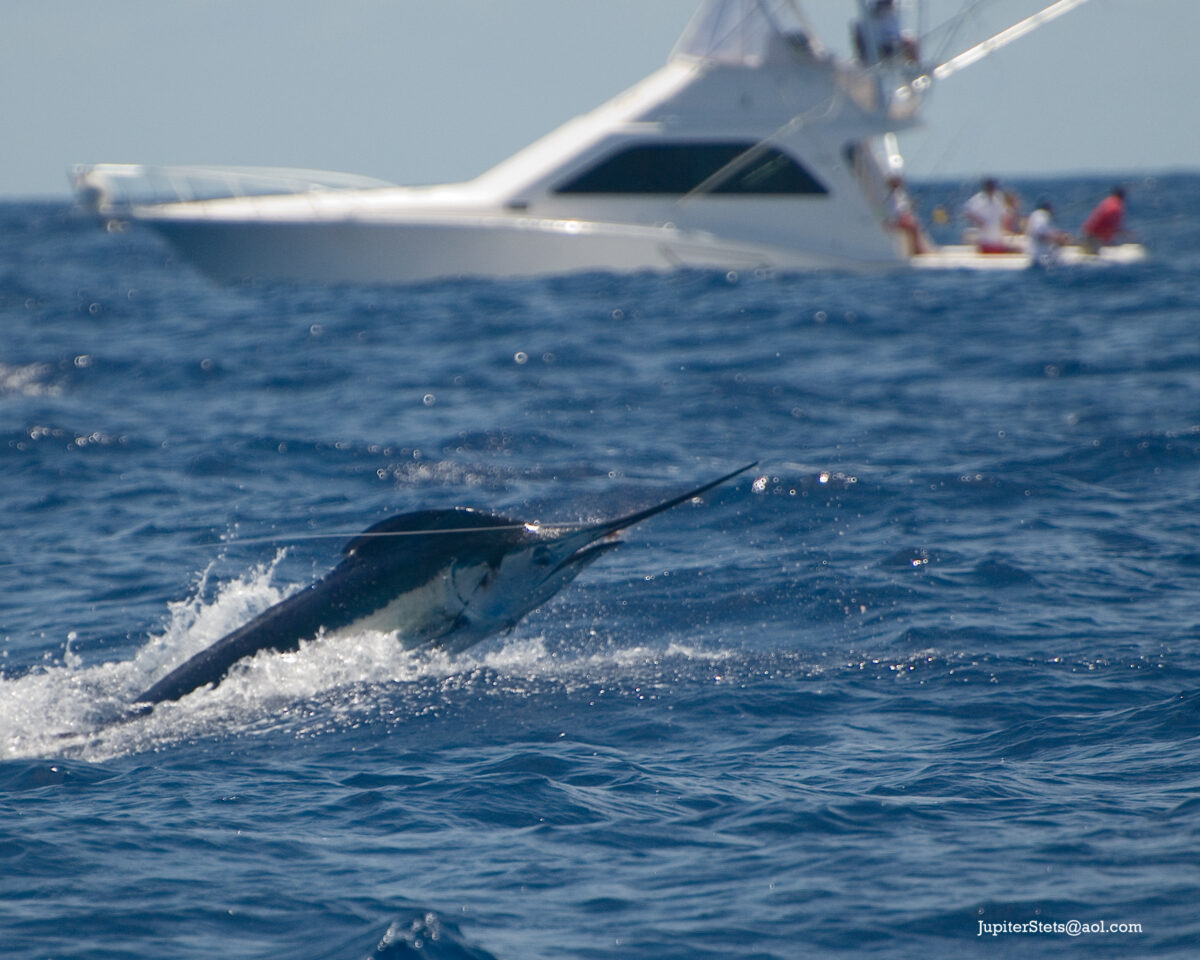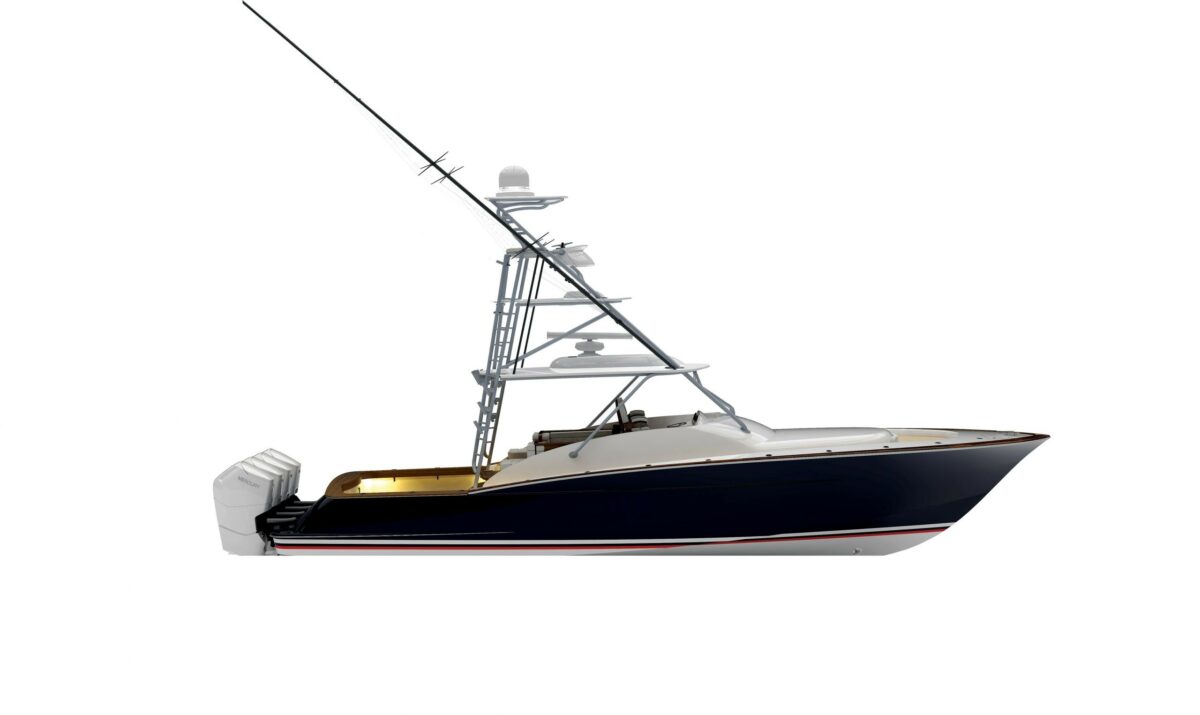We all strive for it from a very young age, we try to run faster, or skate faster, or have the fastest bike. And in our industry, this trend continues with us as adults. Speed on the water has always been desired. Be it to stay away from danger, or to have a military advantage, there are benefits to going fast. If nothing else, it sure is exhilarating. When boats started being used for offshore fishing, speed was limited due mostly to available propulsion systems and engine power. Hull forms also were not optimized for higher performance. Thirty knots became the standard, and that was moving out. This speed afforded more time at the fishing grounds and less time in transit.
Eventually though, single engine installations became twin installations, and power levels grew. Hull form development created less draggy running surfaces, while appetites, and budgets, grew for larger boats, which could fit the larger, more powerful engines that were becoming available. The expectation over many years for any mid- to large-size sportfish is to reach 40 knots. Think of it as a minimum WOT design speed to be competitive. But there always that extra knot. In fact, many higher-end yachts are pushing and exceeding 50 knots. And at those speeds, every little detail counts that much more. Features like shaft tubes, optimized appendages and high-end bottom paint and its application can all contribute to noticeable gains. Sharp edges at strakes, chines and the transom are important to ensure clean water separation is achieved. The negative impacts on speed are also magnified at high speeds.
For example, a full tuna tower can cause the equivalent of as much as a nine percent loss in power due to air drag. At these high speeds, that can cost you upwards of two knots. Let face it, WOT is sexy. But the majority of time, these boats are not pushing their own limits. Conditions offshore usually dictate pulling back a bit to a comfortable cruise speed. Better fuel burn, lower noise and a less harsh ride are available when it gets a bit snotty. However, a hull that tops out in the upper 40s may comfortably cruise north of 40 knots, meaning great range without totally giving up the need for speed. With the advent of newer, high-powered outboards, smaller to mid-sized fishing craft are hitting speeds well above those just mentioned. But in larger sportfishing yachts, outboards are not an option, and waterjets, which perform very well at high speeds, are not very popular. So almost all of these hulls are running with standard propulsion”submerged props on inclined shafts. This propulsion type is great for fishing. But while this arrangement has its own limits due to propeller efficiencies, in the end, it comes down to hull form, design details like those mentioned previously, and most importantly, weight. Weight and its distribution are critical in high performance hulls.
It’s the responsibility of the designer and the builder to be on the same page”the hull design must allow for builder practices, and the build must result in expected weights and centers. These days, much effort is taken, especially with custom builds, in saving weight. Larger engines, a desire for more range”which means more fuel”and added content like gyro stabilizers all add weight. To help offset added weight, new ideas keep being developed using multiple materials and construction techniques. Weight saving in production boats is always a goal, but production build techniques will dictate that not all options can be realized. The modern custom sportfish builder is able to combine cold molded techniques with modern materials in smart ways resulting in light, strong hulls that can achieve and withstand speeds at and above 50 knots; were talking hulls in the 80-foot range seeing these speeds. With improvements like these, we can reverse the spiral. Getting lighter means higher speeds and more range, which requires less fuel, which gets us lighter, etc. No question about it, we all want to go fast.
Someone once said you can go as fast as you can afford. This is somewhat true, and combining new technologies, high build quality and good design helps set the path to meeting, and exceeding, the speed goals of most owners.













